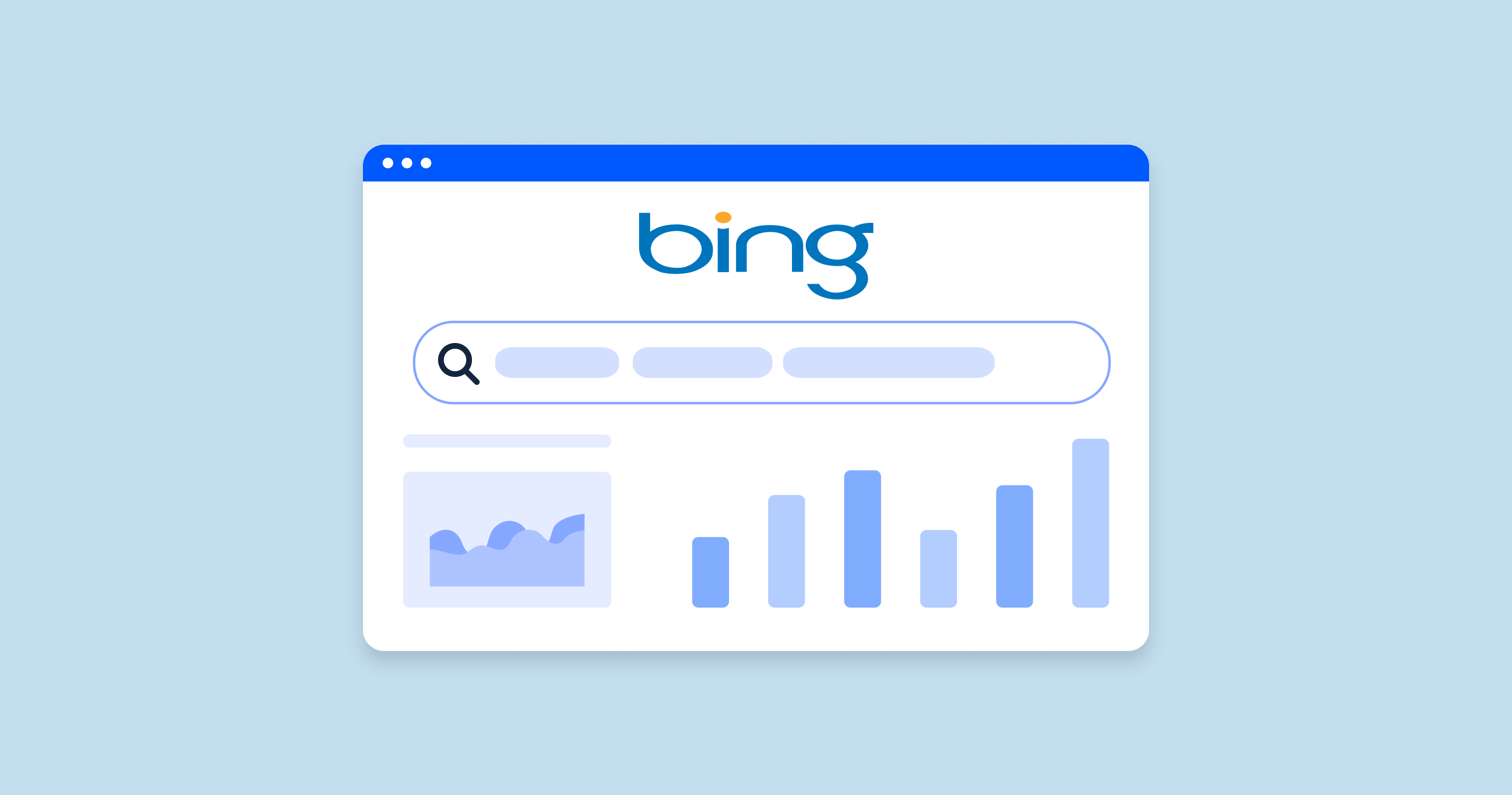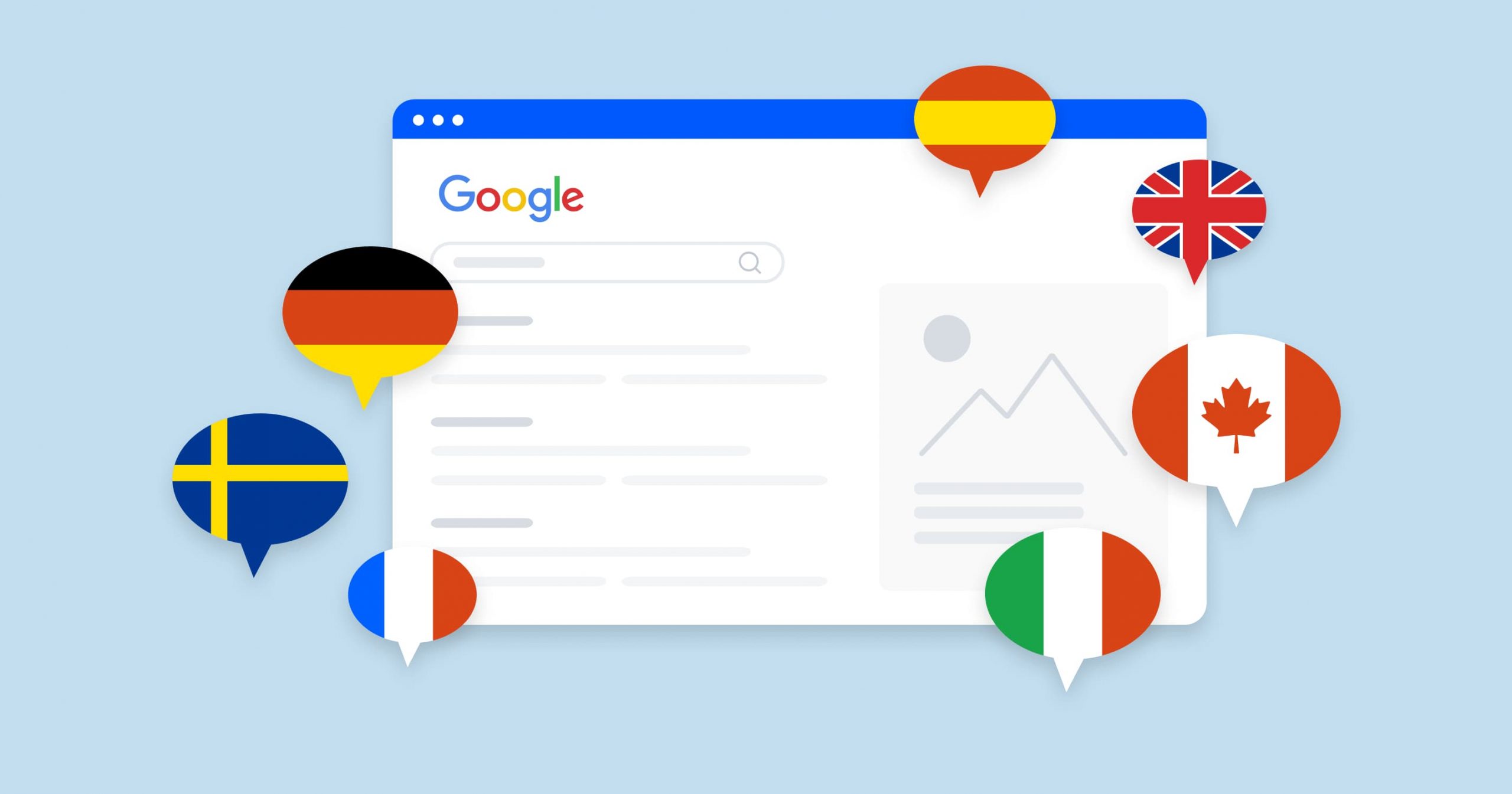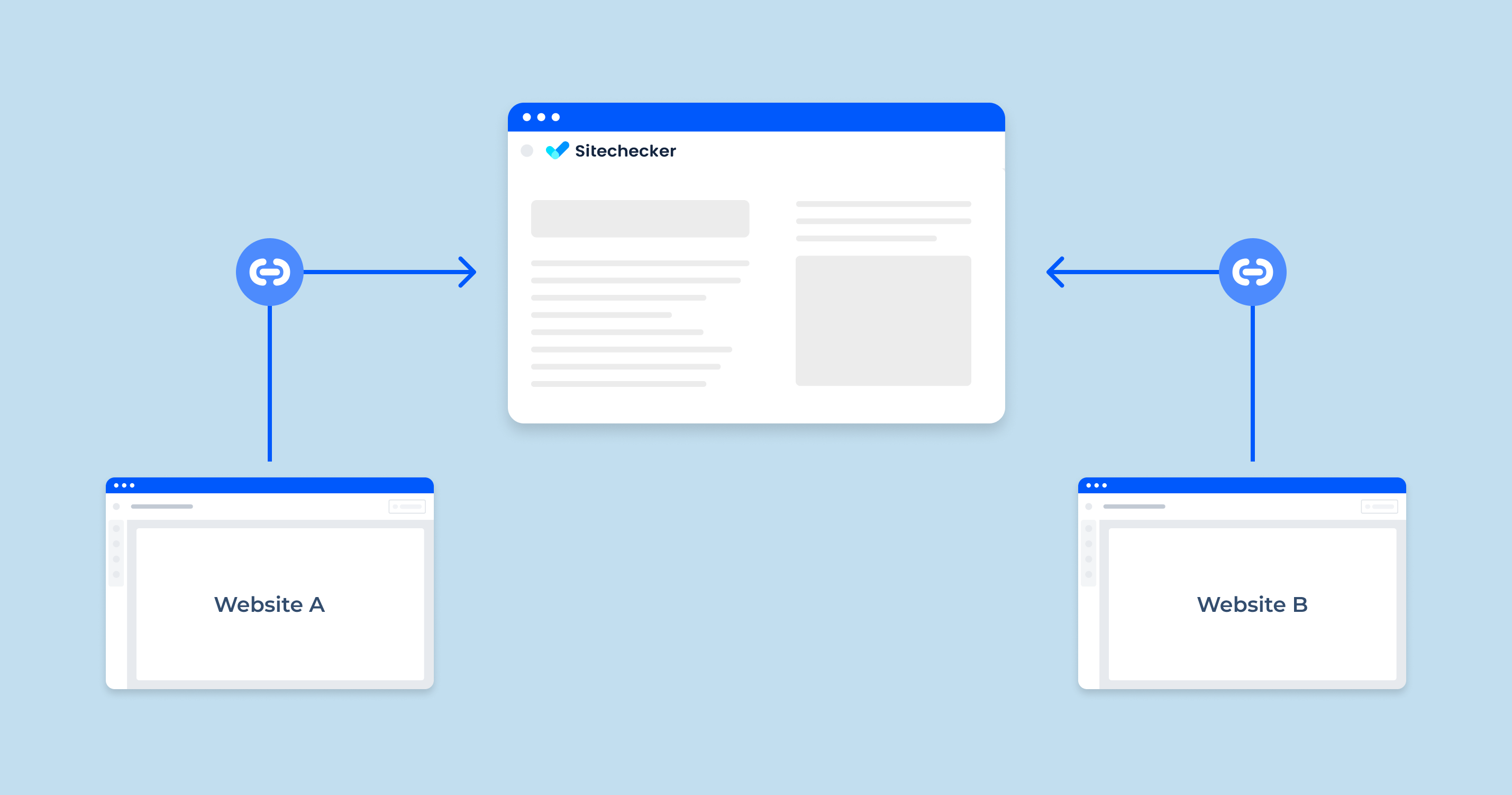What is the Bing Search Algorithm?
In the vast and ever-evolving world of search engines, Microsoft’s Bing is a significant player. Although it might not be as prominent as Google search, in many parts of the world, it holds its own importance and caters to millions of search queries daily. At the core of its functionality lies the Bing Search Algorithm. But what is it, and how does it work?
The Bing Search Algorithm is a set of complex programming rules and procedures that determines which web pages appear in the search results and in what order. Just like any other search engine, Bing aims to provide the most relevant and authoritative results to its users’ queries. To do so, it evaluates a plethora of factors related to the content of a webpage, its structure, the number and quality of links pointing to it, user interaction, and many other elements.
Key Components of Bing’s Algorithm:
- Crawling: Bing’s algorithm starts by sending out “spiders” or “bots” to crawl the web. These bots scan websites, understand their content, and index this information in Bing’s database.
- Relevance: Once indexed, Bing’s algorithm assesses the relevance of each webpage. It determines how well a page matches a given search query, taking into consideration keyword density, meta tags, and content structure.
- Quality: Bing doesn’t merely focus on relevance. The quality of content plays a pivotal role. The algorithm looks at the depth of content, how updated it is, and even checks for signs of content that’s too thin or duplicated from other sources.
- User Experience: Bing values user experience immensely. Factors like page load speed, mobile responsiveness, and intuitive navigation can influence a page’s ranking.
- Authority and Trust: Backlinks, or other sites linking back to a page, are indicators of its authority. However, Bing doesn’t just count the number of backlinks but evaluates their quality. Links from trusted and authoritative sites carry more weight.
In conclusion, the Bing Search Algorithm is a dynamic and intricate system designed to deliver the best possible results to users. As web content proliferates and user behavior evolves, Bing continually refines and updates its algorithm. Thus, for businesses and content creators, understanding this algorithm can be the key to visibility and success on this substantial search platform.
Why Should You Optimize for Bing SEO?
In the ever-competitive landscape of digital marketing, it’s common for businesses to focus heavily on optimizing for Google, given its dominance in the search engine market. However, this single-minded approach can mean missing out on substantial opportunities elsewhere. Bing, Microsoft’s search engine, presents a multitude of reasons for businesses to consider its platform seriously. Here are some compelling reasons why you should optimize for Bing SEO.
Bing Makes Up a Fifth of All Desktop Traffic
While Google undoubtedly leads the search engine pack, Bing is no slouch. It’s estimated that Bing accounts for about 20% of all desktop search traffic. This is a significant number, especially when considering that many businesses and brands overlook Bing in their optimization strategies. By focusing some of your efforts on Bing SEO, you’re accessing a substantial portion of search users that your competitors might be neglecting. This traffic can translate into potential leads, sales, and increased brand visibility.
There’s Lower SERP Competition
One of the benefits of a search engine that’s slightly less popular than Google is that there’s inherently less competition on its Search Engine Results Pages (SERPs). Fewer brands optimize for Bing, which means that with the right strategy, it might be easier to achieve a top-ranking position on Bing than on Google. This lower competition can lead to a higher click-through rate, driving more organic traffic to your site. Given the right conversion strategy, this can result in increased sales and revenue without the intense battle for the top spot on Google’s SERPs.
Bing is Open About Its Ranking Factors
Transparency is a quality that marketers and SEO professionals cherish. Unlike other search engines that can be somewhat cryptic about the factors influencing search rankings, Bing is refreshingly open. Microsoft has provided clear guidelines and insights into how its search engine evaluates and ranks web pages. This transparency offers a clearer path to optimization. When you have a more precise understanding of what a search engine values, you can tailor your SEO strategy accordingly, increasing the chances of achieving higher rankings and driving more traffic.
What are Some Popular Bing Services?
Bing, Microsoft’s search engine, is more than just a platform for conducting searches. Over the years, Microsoft has expanded Bing’s capabilities, introducing various services that cater to diverse user needs and business requirements. These services not only enhance user experience but also provide businesses with tools and platforms to reach their target audience effectively. Here are some of the popular services offered by Bing:
Bing News
Bing News is a dedicated service that aggregates and displays the latest news from various sources around the world. The platform categorizes news into different segments such as World, Local, Business, Technology, Entertainment, and more, making it easier for users to find stories relevant to their interests.
Key Features:
- Customizable Feed: Users can customize their news feed based on their preferences and geographical location.
- Trending Topics: Bing News highlights trending topics, allowing users to stay updated with the most discussed stories worldwide.
- Various Sources: The platform aggregates news from a wide range of reliable sources, ensuring diverse viewpoints on every topic.
Bing Mobile
Bing Mobile is the search engine’s adaptation for mobile devices. Recognizing the increasing reliance on smartphones for search and other online activities, Bing Mobile offers a streamlined, user-friendly experience optimized for smaller screens.
Key Features:
- Voice Search: Users can conduct searches using their voice, eliminating the need to type.
- Location-Based Services: Bing Mobile provides local search results, helping users find businesses, restaurants, and other points of interest nearby.
- Image Search: A feature that allows users to search using images rather than text.
Bing Analytics
Similar to Google Analytics, Bing Analytics offers website owners and digital marketers insights into their website’s performance on Bing’s search engine. This tool is instrumental for businesses looking to optimize their sites for Bing.
Key Features:
- Traffic Insights: Understand where your traffic is coming from, which keywords are driving visits, and how users are interacting with your site.
- Diagnostics & Tools: Bing Analytics provides tools for diagnosing website issues and improving search visibility.
- Integration with Bing Webmaster: A seamless integration with Bing Webmaster tools ensures a comprehensive understanding of site performance.
Bing Advertising
Also known as Microsoft Advertising, Bing Advertising is a platform for businesses to display their ads on Bing’s search engine results pages and its partner networks. It using user’s search history and an excellent avenue for businesses to reach audiences that are unique to Bing.
Key Features:
- Pay-Per-Click Model: Advertisers only pay when someone clicks on their ads, ensuring they’re paying for tangible results.
- Targeting Options: Bing Advertising offers various targeting options, including geographical, demographic, and device targeting.
- Ad Extensions: Enhance your ads with additional information like phone numbers, links to specific site pages, or customer reviews.
Bing’s services, while maybe lesser-known compared to its counterpart Google, offer a wide range of tools and platforms that can significantly benefit both users and businesses. Leveraging these services can help businesses tap into a different audience segment and diversify their online presence.
How Bing Ranks Your Content?
Understanding how Bing ranks content is crucial for any business or individual looking to optimize for this search engine. While there are similarities with other search engines like Google, Bing has its unique characteristics and preferences when it comes to ranking content. Here’s an insight into the factors Bing considers when determining the ranking of your content:
| Relevance | This is the cornerstone of any search engine. Bing assesses how closely related your content is to the search query. It looks at the use of keywords, the depth of content on the topic, meta tags, and other on-page elements to gauge relevance. |
| Quality and Depth of Content | Bing places a strong emphasis on the quality of the content. Websites that offer comprehensive, well-researched, and expert content are likely to rank higher. Thin content, or content that is duplicated from other sources, can negatively impact rankings. |
| User Engagement | If users consistently click on your site in the search results and spend a good amount of time there, Bing takes it as a positive signal. On the contrary, if users quickly bounce back to the search results (a high bounce rate), it could be an indication that your site didn’t provide what they were looking for. |
| Backlinks | Similar to other search engines, backlinks play a crucial role in Bing’s ranking algorithm. However, Bing places a strong emphasis on the quality of the links rather than the quantity. A few good links from authoritative sites can be more beneficial than numerous low-quality links. |
| Page Load Speed | Bing values user experience, and the speed at which your website loads is a part of that. Sites that are optimized for speed and load quickly are likely to be favored in Bing’s rankings. |
| Mobile Friendliness | With a significant chunk of users accessing the web via mobile devices, Bing rewards sites that are mobile-friendly. This includes responsive design, optimized images, and easy navigation on mobile devices. |
| Social Signals | While the exact impact of social signals (like shares, likes, tweets) on rankings is debated, Bing has indicated in the past that they consider these signals as a ranking factor. A strong social presence can potentially boost your Bing rankings. |
| Technical SEO | Ensuring that your website adheres to best practices in technical SEO is crucial. This includes aspects like a clear URL structure, utilization of schema markup, an XML sitemap, and a robots.txt file that guides Bing’s crawlers. |
| Localization | Bing gives weight to local cues. If your business or content is catered toward a specific geographical region, ensuring that you’re optimized for local search can help improve your visibility on Bing. |
How Does Bing Find & Index Your Site?
Bing, like other search engines, uses a combination of techniques and tools to discover and index web content. Ensuring Bing can find and index your content properly is crucial for visibility within its search results. Here’s how Bing does it:
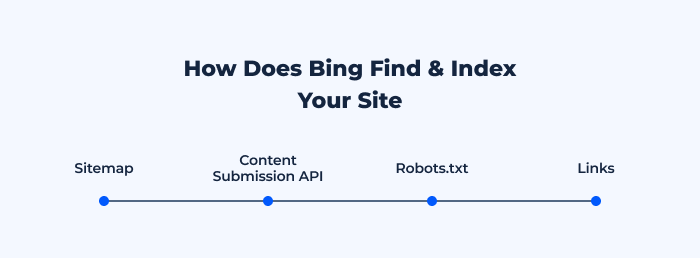
Sitemap
A sitemap is an XML file that lists all the URLs of a website, giving search engines a roadmap of the content available for indexing. Submitting a sitemap to Bing via the Bing Webmaster Tools ensures that all your pages, especially new and updated ones, are discovered and indexed.
Key Points:
- Helps Bing understand the structure of your website.
- Enables quicker discovery of new or updated pages.
Content Submission API
Bing’s Content Submission API allows webmasters to alert the search engine about content changes in real-time. Instead of waiting for Bing’s crawlers to discover changes, you can push updates directly.
Key Points:
- Facilitates faster content indexing.
- Reduces the need for Bing to crawl your site frequently.
Robots.txt
The robots.txt file provides directives to search engines about which parts of a website should or shouldn’t be crawled. While it’s essential to allow Bing to access crucial content, you can use robots.txt to prevent Bing from indexing redundant or sensitive pages.
Key Points:
- Directs Bing’s crawlers on where they can and cannot go.
- Helps avoid indexing of duplicate or non-essential content.
Links
Bing’s crawlers, also known as bots or spiders, navigate the web by following links. When authoritative or popular sites link to your content, it increases the chances of Bing discovering and indexing your pages.
Key Points:
- Internal linking helps Bing understand content relationships and website structure.
- External links from reputable sites can boost content discovery and authority.
Bing SEO vs. Google SEO: What’s the Difference?
Both Bing and Google aim to provide users with the best possible answers to their queries. However, they use slightly different algorithms and criteria. Understanding these differences can help tailor your SEO strategy more effectively.
Backlinks
While both search engines value backlinks as a sign of domain authority, Bing places a heavier emphasis on the quality of the links rather than sheer quantity. High-quality links from authoritative domains are more valuable in Bing’s eyes.
Organic Ranking
Bing places a strong emphasis on user engagement metrics like click-through rates and time spent on a page. While Google values these too, Bing might give them slightly more weight.
Content
Both search engines prioritize high-quality, relevant content. However, Bing is often viewed as giving more weight to older, more established content, while Google may favor fresher content, especially for certain queries.
Technical Factors
Bing values clear and straightforward URL structures more than Google. It’s also more transparent about its technical expectations, offering clearer guidelines via Bing Webmaster Tools.
Social Signals
Bing has openly admitted to considering social signals (like shares and likes) as a ranking factor. Google, on the other hand, has been more ambiguous about the direct influence of social signals on rankings.
In conclusion, while the core principles of SEO remain consistent across both search engines, understanding and catering to their subtle differences can give you an edge in organic search rankings.
Top 8 Bing Ranking Factors
When optimizing for Bing, it’s crucial to understand the unique ranking factors that the search engine prioritizes. Bing, like any search engine, aims to provide its users with the best possible content in response to their queries. Here’s a deep dive into the top 8 ranking factors that Bing emphasizes:
1. Content Quality
Bing, much like other search engines, places a substantial emphasis on the quality of content.
Key Points:
- Depth and Detail: Comprehensive articles or pages that cover a topic in depth tend to rank higher.
- Originality: Unique content that isn’t duplicated elsewhere is favored.
- Up-to-date Information: Regularly updated content signals relevancy to Bing.
2. Keywords’ Usage
Using the right keywords is essential for visibility on Bing.
Key Points:
- Keyword Placement: Titles, headers, and within the content itself are important areas for keyword inclusion.
- Relevance: Keywords should be relevant to the content and not forced.
- Avoid Keyword Stuffing: Overusing keywords can lead to penalties.
The Free Bing Keyword Research Tool can be incredibly useful for uncovering valuable keywords specifically for Bing’s search engine, helping to optimize content and improve search visibility on this platform.
3. Backlinks
Links from other websites act as endorsements and play a pivotal role in Bing’s ranking algorithm.
Key Points:
- Quality over Quantity: A few high-quality backlinks can be more beneficial than numerous low-quality ones.
- Relevance of Linking Site: Links from sites related to your niche or industry carry more weight.
- Anchor Text: Descriptive anchor texts can help Bing understand the context of the linked content.
4. Domain Age
Bing tends to give some preference to older, more established domains.
Key Points:
- Trust and Reliability: Older domains are often seen as more trustworthy.
- Historical Performance: A site’s past performance can influence its current rankings.
5. Social Signals
Bing openly considers social signals, like shares, likes, and tweets, as a ranking factor.
Key Points:
- Engagement Metrics: High engagement rates on social media can improve rankings.
- Quality of Engagement: Genuine interactions, as opposed to automated or purchased ones, are valued.
6. Location
Local search is becoming increasingly important, and Bing places emphasis on delivering locally relevant results.
Key Points:
- Local Listings: Ensure your business is listed on Bing Places and other local directories.
- Localized Content: Content that caters to a specific region or audience can rank higher for local searches.
7. Click-thru Rate
The rate at which users click on your site in the search results can influence rankings.
Key Points:
- Meta Descriptions: An enticing meta description can improve click-through rates.
- Relevance of Title: Ensure the title accurately reflects the content to avoid high bounce rates.
8. User Experience
A good user experience can lead to better engagement metrics, which Bing values.
Key Points:
- Site Speed: Faster loading sites are favored.
- Mobile Optimization: Ensure your site is user-friendly on mobile devices.
- Clear Navigation: A well-structured site helps users find what they’re looking for more easily.
In conclusion, while Bing shares several ranking factors with other search engines, it has its unique priorities. By focusing on these eight core factors, webmasters can improve their site’s performance on Bing’s search results.
How to Optimize Your Website for Bing SEO
Optimizing your website specifically for Bing can unlock a significant amount of traffic. Bing might not have the market share of Google, but it still boasts a vast user base that can’t be ignored. Here’s how you can tailor your SEO strategy to get the most out of Bing:
Claim Your Business on Bing Places
Bing Places is the search engine’s equivalent of Google My Business. Claiming your listing is the first step towards optimizing your local presence on Bing.
Key Points:
- Visibility: Bing Places ensures your business appears in local search results and Bing Maps.
- Accuracy: Keep your business information, like address, phone number, and hours, up-to-date.
Get Verified
Verification ensures that you’re the rightful owner of the business listing and that no unauthorized changes can be made.
Steps:
- Sign in to Bing Places.
- Find your business listing or add it.
- Request verification, usually done through a phone call or mail.
Add High-Quality Images
Images can make a significant impact on a user’s decision to click on your listing.
Tips:
- Use clear and well-lit photos that accurately represent your business.
- Add multiple shots, including the exterior, interior, and any products or services you offer.
Encourage Customers to Leave Reviews
Reviews act as social proof and can significantly influence potential customers.
Strategies:
- Ask satisfied customers to leave a review on your Bing Places listing.
- Respond to reviews, both positive and negative, to show that you value customer feedback.
Use Bing Webmaster Tools URL to Index Your Site
Bing Webmaster Tools provides insights into how your site performs on Bing and offers tools to enhance visibility.
Key Points:
- Immediate Indexing: Instead of waiting for Bing’s crawlers, you can submit new or updated URLs directly.
- Insights: Gain insights into search traffic, crawl errors, and more.
Tag & Categorize Your Site
Effective tagging and categorization improve user experience and make it easier for Bing to understand your content.
Key Points:
- Meta Tags: Ensure each page has a unique meta title and description. These influence how your site appears in search results.
- Categorization: Structure your website in a logical manner. Group related pages under appropriate categories to help both users and search engines navigate your content.
Include Multimedia Content
Multimedia content, such as images, videos, and infographics, can enhance user engagement and diversify the way information is presented on your site.
Key Points:
- Engagement Metrics: Multimedia can increase the time users spend on your page, signaling to Bing that your content is valuable.
- Alt Text: For every image, use descriptive alt text. This helps Bing understand the context of the image and can improve image search rankings.
- Video Transcripts: If you have videos, consider including transcripts. This makes your content accessible and provides additional text for Bing to index.
Use Relevant Keywords
Keywords help search engines, including Bing, understand what your content or user query is about.
Key Points:
- Keyword Research: Use tools like Bing’s Keyword Research tool to find terms your audience is searching for.
- Natural Usage: Incorporate keywords naturally into your content, avoiding keyword stuffing.
- Long-Tail Keywords: These longer, more specific keyword phrases can attract a niche audience and often have less competition.
Build Backlinks
Backlinks, or inbound links, are a significant ranking factor for Bing.
Key Points:
- Quality Over Quantity: Seek backlinks from authoritative and relevant websites.
- Guest Posting: Write high-quality articles for reputable sites in your industry to gain backlinks.
- Avoid Black Hat Techniques: Practices like buying links can result in penalties.
Write High-Quality Content for Bing
Content is king, and Bing values detailed, comprehensive, and original content.
Key Points:
- Depth and Breadth: Cover topics thoroughly, answering potential user questions.
- Update Regularly: Ensure your content remains relevant and up-to-date.
- Originality: Avoid duplicate content. Bing values unique insights and perspectives.
Use Schema Markup to Help Bing Understand the Page Better
Schema markup, or structured data, is a way to annotate your content, helping search engines understand its context.
Key Points:
- Rich Snippets: By using schema, you can enhance the way your page appears in SERPs, potentially increasing click-through rates.
- Types of Markup: Depending on your content, use appropriate schemas such as those for articles, products, events, etc.
- Testing: Use Bing’s Markup Validator tool to ensure your schema is implemented correctly.
Integrate Social Media Profiles
Social signals are a recognized ranking factor for Bing.
Key Points:
- Profile Linking: Ensure your website links to all your active social media profiles and vice versa.
- Engage with Audience: Regularly post and interact with your followers. Engagement can send positive signals to Bing.
- Shareable Content: Produce content that users will want to share on their social profiles.
Remember, Bing, like other search engines, is continually evolving. Stay updated with their guidelines and tools to ensure your site remains optimized for the best possible visibility on the platform.
Bing’s Whole Page Algorithm
The ‘Whole Page Algorithm’ from Bing is a holistic approach to ranking websites and ranking web pages themselves. Rather than just focusing on individual elements like keywords or backlinks, Bing’s Whole Page Algorithm looks at the entire content of a page and its relevance to the user’s query.
Key Features of Bing’s Whole Page Algorithm:
| Holistic Analysis | Unlike some algorithms that might heavily focus on just one or two factors, the Whole Page Algorithm considers the entirety of a page’s content. |
| Contextual Understanding | It strives to comprehend the context in which terms are used on a page. For instance, the word “apple” might relate to the fruit in one context or the tech company in another. The algorithm works to discern these differences. |
| User Intent | Bing places a high emphasis on understanding the intent behind a user’s search. The Whole Page Algorithm considers whether a user is looking for informational content, trying to make a purchase, seeking a specific website, etc. |
| Content Diversity | The algorithm aims to present users with a variety of content types in the search results, such as articles, videos, and images, based on the perceived intent of the search. |
| Semantic Analysis | Bing’s algorithm uses semantic techniques to understand the meaning and relationships between words on a page. This helps in providing more accurate results for user queries. |
| Adaptive Learning | The Whole Page Algorithm is continuously learning. It adapts based on user interactions with search results, adjusting to provide better answers over time. |
Implications for Webmasters:
- Content Quality: Given the holistic nature of the algorithm, creating high-quality, comprehensive content is more crucial than ever.
- User Focus: Think about the user’s intent when creating content. What are they trying to achieve, and how can your content help them?
- Avoid Over-Optimization: Instead of excessively focusing on individual ranking factors, aim for a balanced and natural approach in your SEO strategies.
Bing’s Whole Page Algorithm underscores the importance of holistic SEO strategies. By focusing on creating excellent, user-centric content and ensuring a positive user experience, webmasters can align themselves with Bing’s ranking priorities.
Get Accurate Results for Your Website with Bing Rank Checker and Tracker
The Bing Rank Checker and Tracker tool from SiteChecker is a specialized and effective solution for tracking and improving a website’s ranking on Bing’s search engine. In today’s diverse search engine landscape, it’s crucial to not overlook platforms like Bing, which hold a significant user base. This tool provides accurate and real-time insights into how keywords and web pages are performing on Bing, offering a targeted approach to SEO that is specifically tailored for this search engine. It’s an indispensable tool for marketers and webmasters who want a comprehensive understanding of their site’s visibility on Bing.
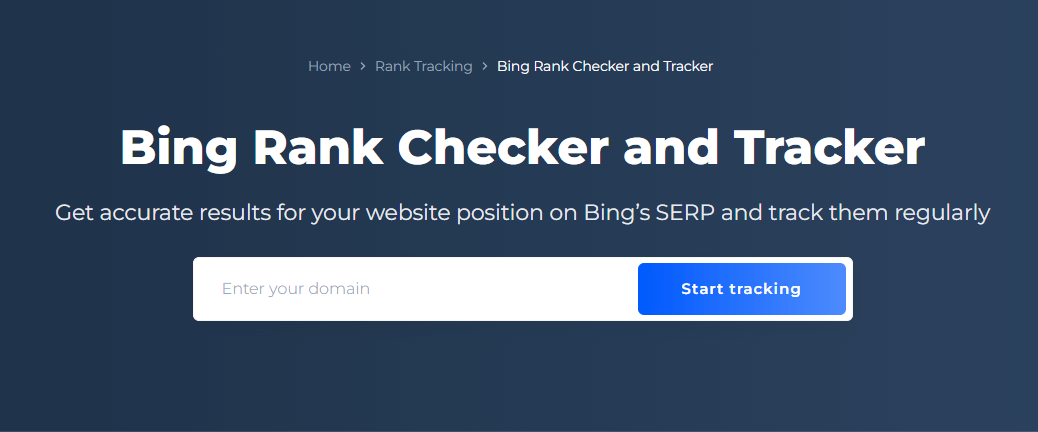
Beyond basic rank tracking, this tool offers additional features that enhance its utility. It includes detailed reports on keyword performance, enabling users to fine-tune their SEO strategy for Bing. Furthermore, the tool provides historical data analysis, allowing users to track and evaluate their progress over time. This feature is particularly useful for identifying trends and adjusting tactics accordingly. The Bing Rank Checker and Tracker tool is an excellent resource for anyone looking to expand their online reach beyond Google and tap into the opportunities that Bing offers.
Discover Your Bing Ranking and Soar Higher!
Track your site's performance on Bing and strategize for better visibility with our tool.
Conclusion
Bing’s search algorithm is a testament to the ever-evolving landscape of search engine optimization. It emphasizes holistic content strategies, user intent, and the overall quality of a website’s offerings. As Bing continues to refine its approach, it’s crucial for webmasters and marketers to understand these nuances to ensure they’re maximizing their visibility on this platform. By integrating the insights shared in this guide, from Bing’s ranking factors to optimization techniques, you can position your website for success on Bing and offer value to its vast user base. Remember, SEO isn’t just about algorithms; it’s about connecting with and providing solutions to your audience.
